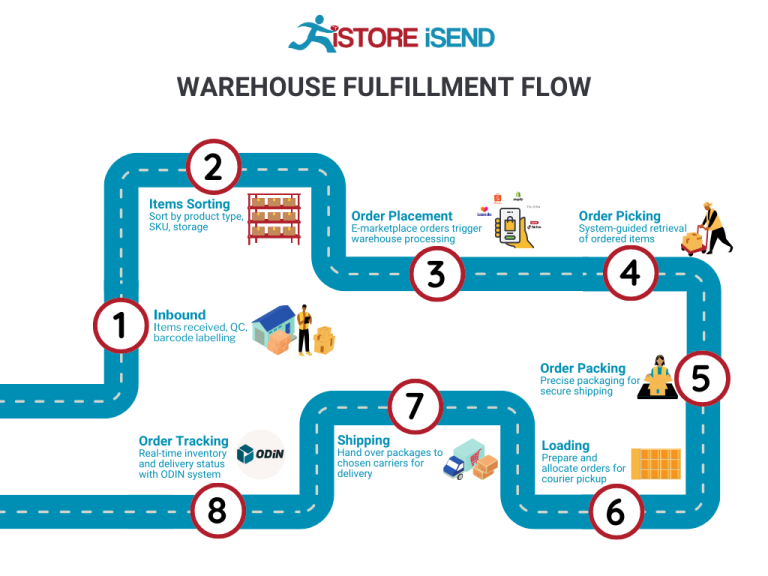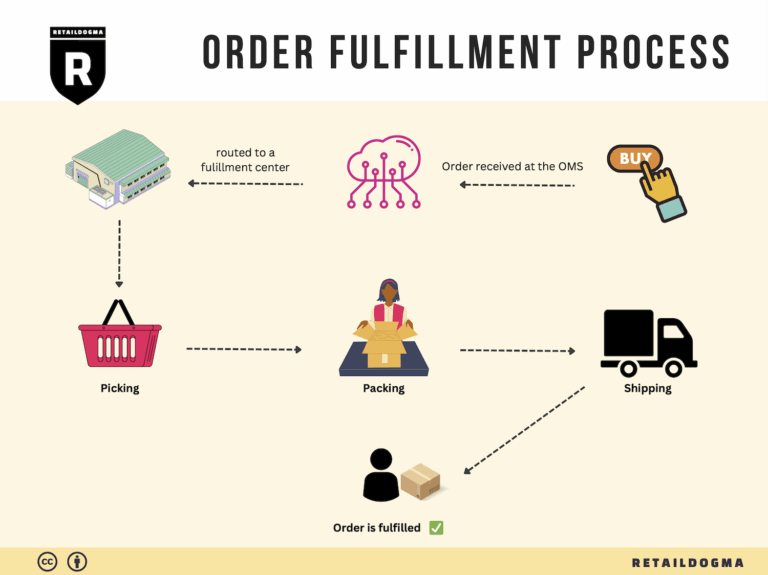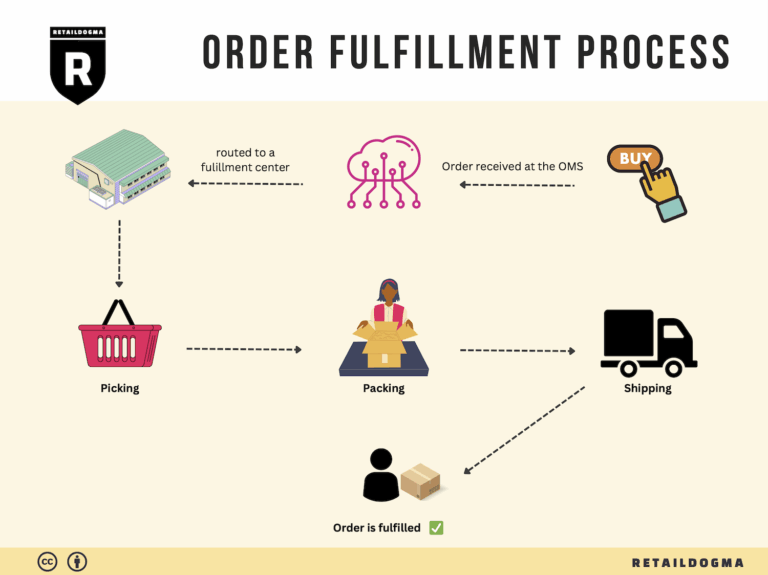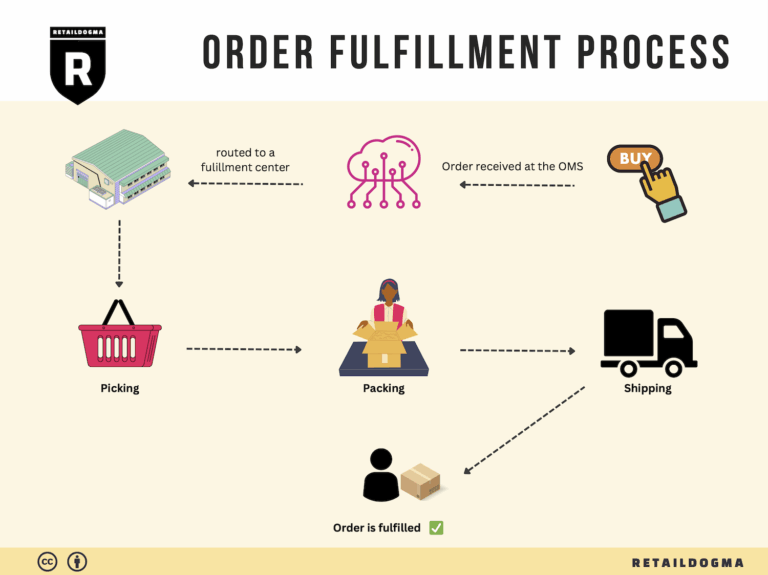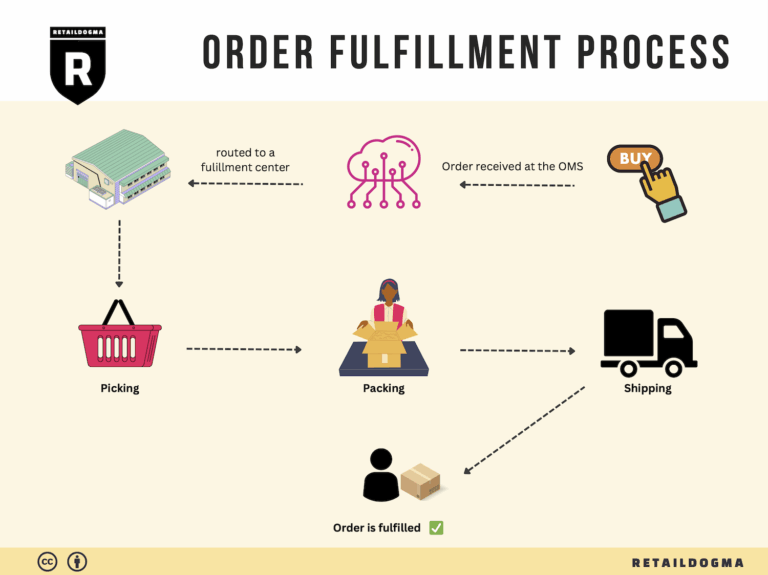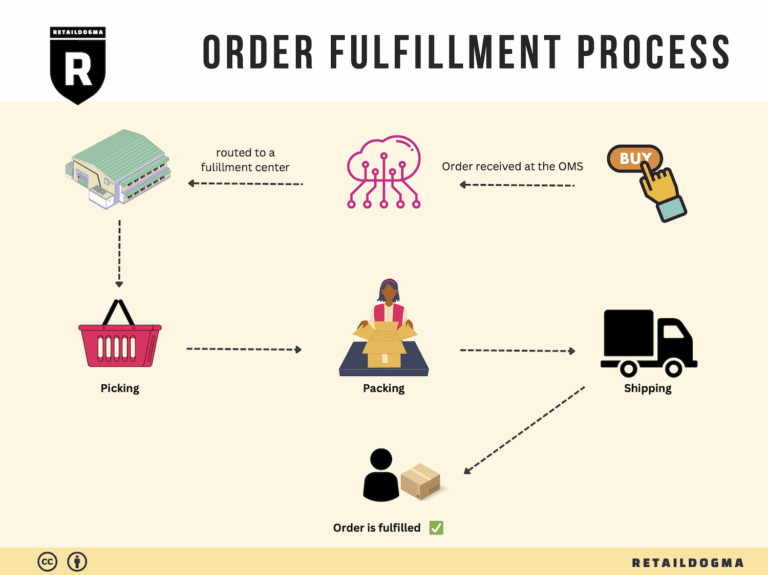What Is A Fulfillment Center? A Complete Guide (2025)
What is E-commerce Fulfillment? An Introduction for Growing Businesses
Understanding E-commerce Fulfillment
As your e-commerce business begins to grow, you may find yourself grappling with the increasing complexity of packing and shipping orders. What once seemed manageable can quickly become overwhelming, leading to delays, mistakes, and ultimately, dissatisfied customers. This is where e-commerce fulfillment comes into play. At its core, fulfillment is the comprehensive process of getting a product from your inventory into the hands of your customer. It encompasses everything from receiving and storing inventory to processing orders, picking items, packing boxes, and shipping products.
In today’s fast-paced e-commerce landscape, effective fulfillment is not just a back-end operation; it is a crucial component of customer satisfaction and retention. Customers expect swift delivery, accuracy, and affordability—demands that can be challenging to meet without a well-structured fulfillment strategy. This guide aims to demystify the e-commerce fulfillment process for growing businesses, helping you navigate the complexities and make informed decisions.
What This Guide Covers
We will explore various fulfillment models, such as Third-Party Logistics (3PL) and Fulfillment by Amazon (FBA), to help you understand the options available for your business. You’ll learn about the core services involved in the fulfillment process, including inventory management, order processing, and shipping logistics. Moreover, we’ll provide practical advice on how to select the right fulfillment partner tailored to your specific needs and operational goals.
Additionally, we will delve into the critical topic of pricing. Understanding the cost structure associated with different fulfillment models is essential for maintaining your margins while delivering the level of service your customers expect.
Empowering Your Business
By the end of this guide, our goal is to empower you with the knowledge and insights needed to make smart, strategic decisions regarding your logistics operations. Whether you are contemplating outsourcing your fulfillment or optimizing an existing process, the information provided will serve as a valuable resource in your journey toward scaling your e-commerce business successfully. With the right fulfillment strategy in place, you can not only meet customer expectations but also enhance your bottom line, allowing you to focus on what you do best: growing your brand.
What You’ll Learn In This Guide
- What is E-commerce Fulfillment? An Introduction for Growing Businesses
- The Order Fulfillment Process: From ‘Buy’ Button to Customer’s Door
- Comparing Fulfillment Models: In-House vs. 3PL vs. Dropshipping
- A Deep Dive into Amazon FBA: Pros, Cons, and Who It’s For
- Core Services Offered by Fulfillment Centers
- How to Choose a Fulfillment Partner: A 6-Point Checklist
- Understanding Fulfillment Pricing: A Breakdown of Common Fees
- Frequently Asked Questions (FAQs) about Fulfillment
- Conclusion: Is Outsourcing Fulfillment the Right Move for Your Business?
- Important Disclaimer
The Order Fulfillment Process: From ‘Buy’ Button to Customer’s Door
1. Receiving Inventory
The first step in the order fulfillment process is receiving inventory into the warehouse. This involves the delivery of goods from suppliers or manufacturers, which must be checked for accuracy against purchase orders. Key activities in this stage include inspecting shipments for damage, verifying quantities, and logging items into the inventory management system using Stock Keeping Units (SKUs).
Importance: Receiving inventory accurately is crucial for maintaining stock levels and preventing discrepancies that can lead to stockouts or overstock situations. An efficient receiving process ensures that products are readily available for order fulfillment, which directly impacts customer satisfaction and operational efficiency.
2. Warehouse Storage
Once the inventory is received, it is stored in designated areas within the warehouse. Proper warehousing involves organizing products in a systematic manner, often guided by a Warehouse Management System (WMS) that optimizes space and retrieval processes. Products are typically stored based on their SKU, demand, and size to facilitate easy access and efficient retrieval.
Importance: Effective warehouse storage is essential for minimizing the time spent searching for products during order picking. An organized warehouse reduces the likelihood of errors, such as picking the wrong item, and enhances the overall productivity of the fulfillment operation. Proper storage also contributes to better inventory management, helping businesses keep track of stock levels and product turnover.
3. Order Picking
Order picking is the process where items are selected from their storage locations to fulfill customer orders. This step often utilizes pick lists—documents that outline which items to collect and their respective locations within the warehouse. Depending on the fulfillment strategy, businesses may use various picking methods, including batch picking, wave picking, or zone picking.
Importance: Accurate and efficient order picking is critical for meeting customer expectations regarding order accuracy and delivery speed. Mistakes in this step can lead to incorrect shipments, resulting in customer dissatisfaction and increased return rates. Streamlining the picking process through technology, such as barcode scanners or mobile devices, can significantly enhance efficiency and accuracy.
4. Order Packing
After items are picked, they are packed for shipment. This involves carefully placing items in boxes or envelopes, along with necessary packing materials to ensure they arrive undamaged. During this stage, packing slips are generated, and shipping labels are printed. Businesses must also consider packaging design and branding to enhance the unboxing experience for customers.
Importance: Order packing is pivotal for protecting products during transit and minimizing returns due to damage. Well-packed orders not only reduce shipping costs but also contribute to a positive customer experience, as buyers appreciate receiving their items in pristine condition. Additionally, effective packing can optimize shipping costs, as lighter and more compact packages often incur lower shipping fees.
5. Shipping & Delivery
The final step in the order fulfillment process is shipping the packed orders to customers. This involves choosing the appropriate shipping carrier based on factors such as cost, delivery speed, and destination. The package is then handed off to the carrier, which manages the last-mile delivery to the customer’s address. Tracking information is typically provided to customers, allowing them to monitor their order status.
Importance: Shipping and delivery are critical touchpoints in the customer journey, as they can significantly influence customer satisfaction and loyalty. Offering various shipping options, including expedited and free shipping, can enhance the shopping experience and drive repeat purchases. Additionally, effective management of shipping logistics can lead to cost savings for the business, particularly when leveraging relationships with carriers for bulk shipping rates.
By mastering each of these five steps in the order fulfillment process, e-commerce businesses can create a seamless experience from the moment a customer clicks the ‘Buy’ button to when their order arrives at their door. This not only enhances customer satisfaction but also drives operational efficiency and profitability in the long run.
Comparing Fulfillment Models: In-House vs. 3PL vs. Dropshipping
Fulfillment Models Comparison
| Model | Who Handles Inventory | Best For (Business Stage) | Key Advantage | Key Disadvantage |
|---|---|---|---|---|
| In-House Fulfillment | The e-commerce business itself | Startups to mid-sized businesses | Full control over inventory and processes | High overhead costs and resource-intensive |
| Third-Party Logistics (3PL) | Third-party fulfillment provider | Growing businesses | Scalability and access to logistics expertise | Less control over inventory and processes |
| Dropshipping | Supplier or manufacturer | New businesses or niche products | Low upfront costs and minimal inventory risk | Lower profit margins and reliance on suppliers |
In-House Fulfillment
In-house fulfillment involves managing the entire order fulfillment process internally, from inventory management to shipping. This model is often adopted by startups and mid-sized businesses that have a physical presence and a moderate volume of orders. The key advantage of in-house fulfillment is the complete control it offers over inventory, order processing, and customer experience. Businesses can tailor their fulfillment processes to meet specific customer needs, ensuring faster response times and personalized service. However, this model comes with significant overhead costs, including warehousing, staffing, and technology investments. As a business grows, these costs can escalate, making in-house fulfillment less viable for scaling operations. Additionally, the resource-intensive nature of this model can divert attention from core business activities, such as marketing and product development.
Third-Party Logistics (3PL)
Third-party logistics (3PL) providers offer a comprehensive fulfillment solution, managing inventory, warehousing, and shipping on behalf of e-commerce businesses. This model is particularly advantageous for growing businesses that wish to scale operations without the burden of managing logistics internally. By partnering with a 3PL, businesses gain access to advanced technology, logistics expertise, and economies of scale, resulting in lower shipping costs and faster delivery times. Additionally, 3PLs can handle seasonal fluctuations in order volume, providing flexibility that in-house operations may struggle to achieve. However, the downside of using a 3PL is the reduced control over inventory and fulfillment processes. Businesses must trust their provider to maintain quality standards and timely deliveries, which can be a concern if the 3PL does not align with the company’s values or operational standards.
Dropshipping
Dropshipping is a fulfillment model where the retailer does not hold inventory but instead partners with suppliers who fulfill orders directly to customers. This model is particularly appealing for new businesses or those venturing into niche markets, as it requires minimal upfront investment and eliminates the need for warehousing. The primary advantage of dropshipping is the low financial risk associated with holding inventory; businesses only pay for products after a sale is made. This allows entrepreneurs to test new products without significant financial commitment. However, dropshipping also comes with challenges, such as lower profit margins due to reliance on suppliers and a lack of control over product quality and shipping times. Additionally, businesses may face issues with stock availability and fulfillment errors, which can negatively impact customer satisfaction. As a result, while dropshipping offers a low-barrier entry into e-commerce, it requires careful management of supplier relationships and customer expectations.
Conclusion
Choosing the right fulfillment model is critical for e-commerce businesses looking to scale effectively. Each model has its unique advantages and disadvantages, and the best choice will depend on the specific needs, goals, and stage of the business. In-house fulfillment provides control and customization but can be resource-intensive. Third-party logistics offers scalability and expertise, while dropshipping minimizes risk and upfront costs. Business owners must evaluate their operational capabilities, market demands, and long-term objectives to determine the most suitable fulfillment strategy for their growth journey.
A Deep Dive into Amazon FBA: Pros, Cons, and Who It’s For
Understanding Fulfillment by Amazon (FBA)
Fulfillment by Amazon (FBA) is a service that enables e-commerce sellers to store their products in Amazon’s fulfillment centers. When a customer places an order, Amazon handles the picking, packing, shipping, and customer service on behalf of the seller. This model allows sellers to leverage Amazon’s vast logistics network and customer service capabilities to enhance their e-commerce operations.
How FBA Works
-
Setup and Inventory Storage: Sellers create an Amazon seller account and set up FBA. They then ship their products to Amazon’s designated fulfillment centers. Amazon provides guidelines on packaging and labeling products to ensure compliance with their standards.
-
Order Processing: Once products are stored in Amazon’s warehouses, they become eligible for Amazon Prime and other Amazon services. When a customer places an order, Amazon’s system automatically picks the product from the warehouse, packs it, and ships it to the customer.
-
Customer Service and Returns: Amazon takes care of all customer interactions related to shipping, including handling inquiries, managing returns, and processing refunds. This allows sellers to focus on product development and marketing rather than logistical challenges.
-
Fees: Sellers are charged fees for using FBA, which include storage fees for the inventory stored in Amazon’s warehouses and fulfillment fees for each order processed.
Pros of Fulfillment by Amazon (FBA)
-
Prime Eligibility: One of the most significant advantages of FBA is that products become eligible for Amazon Prime. This opens up a vast customer base that prefers fast, free shipping options, thereby increasing the likelihood of sales.
-
Customer Trust and Credibility: Amazon is known for its customer-centric approach. By using FBA, sellers benefit from the trust and credibility associated with the Amazon brand. Customers often feel more secure purchasing items fulfilled by Amazon due to its established return policies and customer service.
-
Multi-Channel Fulfillment: FBA allows sellers to fulfill orders not only on Amazon but also from other sales channels, such as eBay, their own websites, or social media platforms. This flexibility enables sellers to streamline their logistics under one umbrella, making it easier to manage inventory and orders.
-
Scalability: FBA provides a scalable solution for growing businesses. As sales increase, sellers can easily send more inventory to Amazon without needing to invest in their own warehousing and fulfillment infrastructure.
-
Reduced Shipping Costs: Amazon’s volume of shipments allows it to negotiate better shipping rates with carriers, which can be passed on to sellers, ultimately reducing shipping costs.
Cons of Fulfillment by Amazon (FBA)
-
High Fees: While FBA offers many benefits, sellers must also contend with various fees. These include monthly storage fees based on the amount of inventory stored and fulfillment fees for each order. For sellers with lower margins, these costs can significantly eat into profits.
-
Strict Inventory Rules: Amazon has stringent guidelines regarding inventory management. Sellers must maintain adequate stock levels to avoid penalties, and failure to comply can lead to additional fees or account suspension.
-
Commingling Risks: FBA operates on a commingling model, where inventory from different sellers is stored together. While this can streamline processes, it poses risks. If a customer returns a product that is damaged or defective, it may affect the seller’s reputation, even if the issue originated from another seller’s inventory.
-
Limited Control: By outsourcing fulfillment to Amazon, sellers relinquish some control over their customer experience. While Amazon manages shipping and customer service, any issues that arise may reflect poorly on the seller’s brand, even if they are not directly at fault.
-
Complex Returns Process: While Amazon handles returns, the process can be complex for sellers, especially if they have specific return policies or need to manage returned inventory differently. Understanding how returns are processed is crucial to maintaining inventory accuracy.
Who is FBA Best For?
Fulfillment by Amazon is particularly well-suited for:
-
Small to Medium-Sized Businesses: Companies that may not have the resources to manage their own fulfillment infrastructure can benefit from FBA’s streamlined processes and logistics.
-
Brands Looking for Rapid Growth: For sellers aiming to scale quickly, FBA provides a way to leverage Amazon’s logistics without the upfront costs of warehousing and distribution.
-
Sellers with High Turnover Products: If a seller has products that sell quickly and consistently, FBA can help maintain inventory levels while ensuring fast delivery to customers.
-
E-commerce Entrepreneurs Focused on Marketing: Those who want to focus on marketing and sales rather than the complexities of logistics will find FBA an attractive option.
-
Brands Seeking to Enhance Customer Trust: Sellers looking to build credibility and customer trust can benefit from associating their products with Amazon’s reputation for quality service.
In conclusion, while FBA presents an excellent opportunity for e-commerce businesses to streamline their fulfillment processes, it is essential to weigh the benefits against the potential drawbacks. Understanding these factors will enable sellers to make informed decisions about whether FBA aligns with their business strategy and growth objectives.
Core Services Offered by Fulfillment Centers
Inventory Management & Warehousing
Inventory management and warehousing form the backbone of an effective fulfillment strategy. This service encompasses the process of receiving, storing, and tracking inventory levels in a secure and organized manner. Fulfillment centers utilize advanced Inventory Management Systems (IMS) to monitor stock levels in real-time, ensuring that businesses always know how much inventory they have on hand and when to reorder.
Benefits:
1. Efficiency: By outsourcing inventory management to a fulfillment center, e-commerce businesses can streamline their operations. This allows them to focus on core activities such as marketing and product development while ensuring that inventory levels are optimized and aligned with customer demand.
-
Cost-Effectiveness: Proper inventory management helps prevent overstocking and stockouts, reducing storage costs and lost sales opportunities. Fulfillment centers often leverage economies of scale, providing businesses with better pricing on bulk inventory purchases.
-
Scalability: As a business grows, so do its inventory management needs. Fulfillment centers offer scalable solutions that can adapt to fluctuating demand, ensuring that businesses can efficiently manage their inventory without the need for significant capital investment in storage facilities.
Pick and Pack Services
Pick and pack services refer to the process of selecting (picking) items from inventory and preparing (packing) them for shipment. This service is crucial for ensuring that orders are fulfilled accurately and efficiently. Fulfillment centers use sophisticated technology and trained staff to ensure that the right items are picked and packed according to customer specifications.
Benefits:
1. Accuracy: One of the primary advantages of professional pick and pack services is accuracy. Fulfillment centers utilize barcoding and scanning technology to minimize errors during the picking process, ensuring that customers receive exactly what they ordered, which enhances customer satisfaction and reduces return rates.
-
Speed: Fulfillment centers are designed to handle high volumes of orders quickly. This efficiency allows businesses to offer expedited shipping options to their customers, meeting the growing demand for fast delivery times.
-
Reduced Labor Costs: By outsourcing pick and pack services, e-commerce businesses can significantly reduce their labor costs. Fulfillment centers employ trained personnel to handle these tasks, eliminating the need for businesses to hire, train, and manage their own staff.
Kitting and Assembly
Kitting and assembly services involve combining multiple products into a single package or preparing items for sale. This could include bundling complementary products, packaging items together for promotional offers, or assembling products that require multiple components. Fulfillment centers provide these services to streamline the preparation of orders before they are shipped.
Benefits:
1. Customization: Kitting allows businesses to offer customized products or bundles, enhancing the customer experience. This flexibility can lead to increased sales as customers are often more inclined to purchase bundled items at a perceived discount.
-
Operational Efficiency: By outsourcing kitting and assembly tasks to fulfillment centers, businesses can improve their operational efficiency. This service reduces the time spent on order preparation, allowing businesses to focus on sales and customer engagement.
-
Inventory Management: Kitting can help businesses manage inventory more effectively. By bundling products together, companies can reduce the number of individual SKUs they need to track, simplifying inventory management and forecasting.
Returns Management (Reverse Logistics)
Returns management, or reverse logistics, is the process of handling product returns from customers. This service includes receiving returned items, assessing their condition, processing refunds or exchanges, and reintegrating the products back into inventory. Effective returns management is critical in maintaining customer satisfaction and loyalty.
Benefits:
1. Enhanced Customer Experience: A streamlined returns process improves the overall customer experience. By offering an easy and efficient way for customers to return products, businesses can foster trust and encourage repeat purchases.
-
Cost Recovery: Efficient returns management helps businesses recover value from returned items. Fulfillment centers often have processes in place to quickly assess and restock returned products, minimizing losses and keeping inventory levels accurate.
-
Data Insights: Returns management can provide valuable data insights into customer behavior and product performance. Analyzing return reasons can help businesses identify potential quality issues or areas for improvement in product offerings.
By leveraging these core services offered by fulfillment centers, e-commerce businesses can enhance their operational efficiency, reduce costs, and ultimately improve customer satisfaction. This strategic partnership not only supports business growth but also positions brands to compete effectively in the increasingly demanding e-commerce landscape.
How to Choose a Fulfillment Partner: A 6-Point Checklist
Location & Warehouse Network
Importance:
The geographical location of your fulfillment partner’s warehouses plays a critical role in shipping efficiency and cost-effectiveness. A well-positioned network can significantly reduce shipping times and expenses, which are crucial for meeting customer expectations for fast delivery.
Questions to Ask:
– Where are your warehouses located, and how does that align with our customer base?
– Do you have multiple locations to support regional fulfillment?
– How do you handle shipping to remote or international locations?
– What shipping carriers do you partner with, and how do their routes affect delivery times?
Technology & Integrations
Importance:
In today’s digital landscape, a fulfillment partner’s technology capabilities are essential for seamless operations. Efficient order management systems, real-time inventory tracking, and integration with your existing e-commerce platforms can streamline processes and provide visibility into your supply chain.
Questions to Ask:
– What technology do you use to manage orders and inventory?
– Can your system integrate with our e-commerce platform (e.g., Shopify, WooCommerce)?
– Do you provide real-time tracking for shipments and inventory levels?
– How often do you update your technology, and what improvements can we expect?
Specializations (e.g., Cold Storage, Oversized Items)
Importance:
Not all fulfillment partners are created equal, and many specialize in particular types of products or services. Understanding these specializations can help you select a partner that meets your specific needs, whether you sell perishable goods, oversized items, or fragile products.
Questions to Ask:
– What types of products do you specialize in handling?
– Do you have the facilities to manage cold storage or hazardous materials?
– How do you ensure the safety and integrity of specialized items during storage and shipping?
– Can you accommodate unique packaging or handling requirements?
Scalability & Capacity
Importance:
As your business grows, your fulfillment needs will evolve. Choosing a partner that can scale with you is vital to avoid disruptions in your supply chain as order volumes increase. This includes not just warehouse space but also workforce flexibility and technology support.
Questions to Ask:
– How do you handle peak seasons or sudden spikes in order volume?
– What is your current capacity, and how quickly can you scale if our order volume increases?
– Do you have contingency plans in place for unexpected challenges, such as labor shortages or supply chain disruptions?
– Can you provide case studies or examples of how you have scaled for other clients?
Pricing and Contracts
Importance:
Understanding the pricing structure and contract terms is essential for budgeting and forecasting. Transparent pricing allows you to avoid hidden fees that can erode your profit margins. Additionally, knowing the contract terms will help you understand the commitment level and flexibility you have.
Questions to Ask:
– What is your pricing model (e.g., per order, per item, monthly fees)?
– Are there any additional costs for storage, handling, or returns?
– What are the terms of the contract, and what is the notice period for cancellation?
– Do you offer any performance incentives or discounts for high volume?
Customer Support & Reviews
Importance:
Strong customer support can make a significant difference in your fulfillment experience. A responsive and knowledgeable support team can help resolve issues quickly, ensuring your operations run smoothly. Additionally, researching reviews and testimonials from other clients provides insight into the partner’s reliability and service quality.
Questions to Ask:
– What kind of customer support do you offer (e.g., phone, email, chat)?
– What are your average response times for inquiries or issues?
– Can you provide references or case studies from current clients in our industry?
– How do you handle disputes or errors in order fulfillment?
Conclusion
Choosing the right fulfillment partner is a strategic decision that can impact your business’s growth and customer satisfaction. By carefully evaluating each of these six critical factors, you can ensure that you select a partner that aligns with your operational needs and business goals. Take the time to ask the right questions, assess their capabilities, and consider how they will support your journey as you scale your e-commerce operations.
Understanding Fulfillment Pricing: A Breakdown of Common Fees
Initial Setup Fees
When partnering with a fulfillment provider, many businesses encounter initial setup fees. These fees cover the costs associated with onboarding your business into the fulfillment system. Setup may include configuring your online store integrations, establishing inventory management systems, and initial training for your team on how to use the provider’s platform.
Calculation: Initial setup fees can vary widely based on the complexity of your operations. Typically, these fees range from a few hundred to several thousand dollars, depending on the scale of your business and the services required. It’s crucial to ask for a detailed breakdown of what these fees cover to ensure you’re receiving the necessary support.
Receiving Fees
Receiving fees are charged when your inventory arrives at the fulfillment center. This fee encompasses the labor and resources required to unload, inspect, and put away your products in the warehouse. Proper handling during this stage is critical to maintaining inventory quality and accuracy.
Calculation: Receiving fees are generally calculated on a per-pallet or per-unit basis. For example, a fulfillment center might charge $15 per pallet or $0.25 per item received. The total cost will depend on the volume of goods you are sending and the provider’s pricing structure. Be sure to inquire about any additional costs for special handling of fragile or oversized items.
Storage Fees (per pallet/bin)
Storage fees are incurred for the space your inventory occupies within the fulfillment center. This fee covers the ongoing cost of storing your products until they are sold and shipped. It’s essential to keep storage costs in mind, as they can significantly impact your overall fulfillment expenses.
Calculation: Storage fees are typically charged monthly and can vary by provider. Common models include a fixed rate per pallet or bin, which can range from $10 to $40 per month, depending on the facility’s location and the type of goods stored. Some providers may offer tiered pricing based on the volume of inventory, so understanding how your inventory flow affects storage costs is vital.
Pick & Pack Fees (per item/order)
Pick and pack fees are assessed for the labor involved in retrieving items from storage, packing them for shipment, and preparing them for delivery. This service is crucial as it directly affects the speed and accuracy of order fulfillment, which is essential for customer satisfaction.
Calculation: Pick and pack fees can be structured in several ways. Providers may charge per item picked (e.g., $0.50 per item) or a flat fee per order (e.g., $2.00 per order, regardless of the number of items). Some fulfillment centers may have minimum order charges or tiered pricing based on order volume. Understanding your average order size will help you estimate these costs more accurately.
Shipping Fees
Shipping fees are the costs associated with transporting your products from the fulfillment center to your customers. This fee can encompass various elements, including carrier charges, packaging materials, and handling costs.
Calculation: Shipping fees are typically calculated based on several factors, including the destination, weight, and dimensions of the package. Many fulfillment providers negotiate bulk shipping rates with carriers, allowing you to benefit from lower shipping costs. It’s important to review the provider’s shipping options, as they may offer different rates based on service levels (e.g., standard, expedited) and shipping zones.
Tips for Getting an Accurate Quote
-
Be Specific: Provide detailed information about your products, including dimensions, weight, and any special handling requirements. This will help fulfillment providers give you a more precise estimate.
-
Understand Your Needs: Clearly outline your expected order volume, seasonal fluctuations, and any specific services you may require (like kitting or returns management). This information is vital for accurate pricing.
-
Request Itemized Quotes: Ask for itemized quotes that break down each fee type. This will help you compare providers more effectively and understand where your costs are coming from.
-
Inquire About Discounts: Don’t hesitate to ask about potential discounts for higher volumes or long-term contracts. Many fulfillment centers offer incentives for businesses that commit to using their services over an extended period.
-
Review Contract Terms: Before signing a contract, ensure you fully understand the fee structure, including any hidden fees that may apply. Clarifying these details upfront can prevent unexpected charges later.
By understanding these common fulfillment fees and how they are calculated, you can make more informed decisions that align with your e-commerce growth strategy while maintaining a keen eye on your logistics costs.
Frequently Asked Questions (FAQs) about Fulfillment
1. What is a fulfillment warehouse?
A fulfillment warehouse is a specialized storage facility that manages the entire process of order fulfillment for e-commerce businesses. This includes receiving, storing, picking, packing, and shipping products directly to customers. Fulfillment warehouses are designed to optimize logistics and ensure timely delivery, often utilizing advanced technology and systems for inventory management and order processing.
2. What’s the difference between a warehouse and a fulfillment center?
While both warehouses and fulfillment centers store goods, their primary functions differ. A warehouse is mainly for storage, focusing on inventory management and long-term storage of products. In contrast, a fulfillment center emphasizes order processing and shipping, where items are picked and packed for delivery directly to customers. Fulfillment centers often have more advanced technology for managing orders and inventory turnover.
3. What is a 3PL?
A 3PL, or third-party logistics provider, is a company that offers logistics services, including warehousing, order fulfillment, and transportation, on behalf of another business. By outsourcing fulfillment to a 3PL, e-commerce brands can leverage the provider’s expertise, technology, and network to enhance their logistics operations, reduce costs, and improve delivery times.
4. How much do fulfillment services cost?
The cost of fulfillment services can vary widely based on several factors, including the size and weight of the products, order volume, storage space required, and additional services like kitting or returns management. Generally, fulfillment costs include storage fees, picking and packing fees, shipping charges, and any additional service fees. It’s essential to obtain quotes from multiple fulfillment providers to find a service that aligns with your budget and needs.
5. How does the fulfillment process work?
The fulfillment process typically involves several steps:
1. Receiving Inventory: Products are delivered to the fulfillment center and stored.
2. Order Processing: When a customer places an order, the fulfillment center receives the order data.
3. Picking: Staff retrieve the ordered items from inventory.
4. Packing: Items are packed securely for shipment.
5. Shipping: The packed orders are sent to the customer using selected carriers.
6. Returns Management: If items are returned, they are processed and reintegrated into inventory.
6. What are the benefits of using a fulfillment warehouse?
Using a fulfillment warehouse offers numerous advantages, including:
– Scalability: Easily adjust to fluctuating order volumes without needing to manage additional space or labor.
– Cost Efficiency: Benefit from bulk shipping rates and reduced overhead costs.
– Faster Delivery: Access to advanced logistics capabilities can speed up order processing and delivery times.
– Focus on Core Business: Outsourcing fulfillment allows businesses to concentrate on marketing and product development.
7. How can I choose the right fulfillment provider?
To choose the right fulfillment provider, consider the following criteria:
– Experience: Look for providers with a proven track record in your industry.
– Technology: Ensure they have robust inventory management and order processing systems.
– Location: Proximity to your customer base can affect shipping times and costs.
– Flexibility: The ability to scale services as your business grows.
– Customer Support: Evaluate the quality of their customer service and responsiveness.
8. What is inventory management in fulfillment?
Inventory management in fulfillment involves tracking and managing stock levels to ensure that products are available for order fulfillment without overstocking. This includes monitoring sales trends, forecasting demand, and setting reorder points. Effective inventory management helps prevent stockouts and ensures that customer orders can be fulfilled promptly.
9. Can fulfillment warehouses handle returns?
Yes, most fulfillment warehouses have a returns management process in place. This involves receiving returned items, assessing their condition, restocking them if they are in sellable condition, and managing refunds or exchanges for customers. A streamlined returns process is essential for maintaining customer satisfaction and inventory accuracy.
10. How do I integrate my e-commerce platform with a fulfillment warehouse?
Integrating your e-commerce platform with a fulfillment warehouse typically involves using APIs or integrations provided by the fulfillment service. Most modern fulfillment providers offer software that can connect with popular e-commerce platforms, allowing for real-time order processing, inventory updates, and shipping notifications. It’s crucial to work closely with your fulfillment partner to ensure a smooth integration process.
Conclusion: Is Outsourcing Fulfillment the Right Move for Your Business?
Evaluating the Benefits of Outsourcing Fulfillment
In today’s fast-paced e-commerce landscape, outsourcing your fulfillment operations can offer significant advantages that are crucial for scaling your business. First and foremost, partnering with a fulfillment service saves you invaluable time. By delegating tasks such as inventory management, order processing, and shipping logistics, you can redirect your focus toward strategic initiatives like marketing, product development, and customer engagement. This shift not only enhances productivity but also fosters business growth.
Scalability is another compelling benefit of outsourcing fulfillment. As your business grows, so do the complexities of your logistics operations. A third-party logistics provider (3PL) has the infrastructure and expertise to manage increased order volumes seamlessly. This allows you to scale operations without the need for substantial capital investment in warehousing and technology. Furthermore, fulfillment partners often provide access to advanced technology and analytics, enabling you to make data-driven decisions and optimize your supply chain.
However, the choice of fulfillment partner is critical to your success. Not all providers offer the same level of service, expertise, or integration capabilities. It’s essential to conduct thorough research and consider factors such as shipping speed, cost structure, and customer support. The right partner will not only meet your current needs but also adapt to your evolving business requirements as you grow.
Take Action
To determine whether outsourcing fulfillment is the right move for your business, we encourage you to conduct a comprehensive audit of your current shipping and logistics processes. Assess your operational challenges, customer expectations, and growth ambitions. This evaluation will provide clarity on whether a fulfillment partner could enhance your efficiency, customer satisfaction, and ultimately, your bottom line. Don’t hesitate to explore your options—taking this step could be transformative for your business.
Important Disclaimer
⚠️ Important Disclaimer
The information in this guide is for educational purposes. Fulfillment services, pricing, and platform features change frequently. Always conduct your own due diligence and consult with providers directly before making business decisions.
